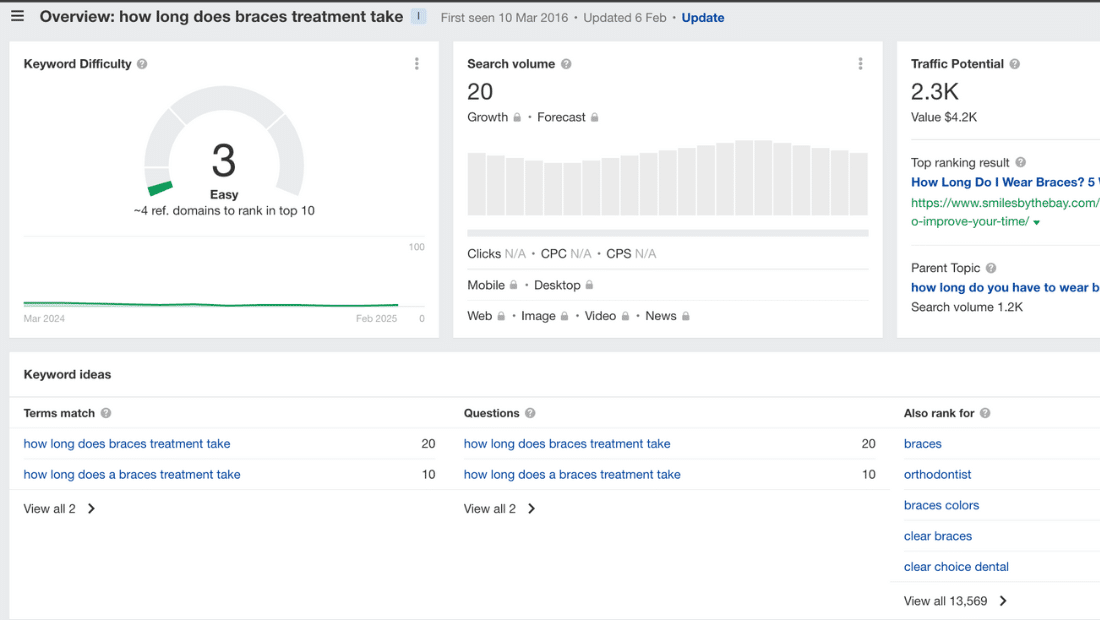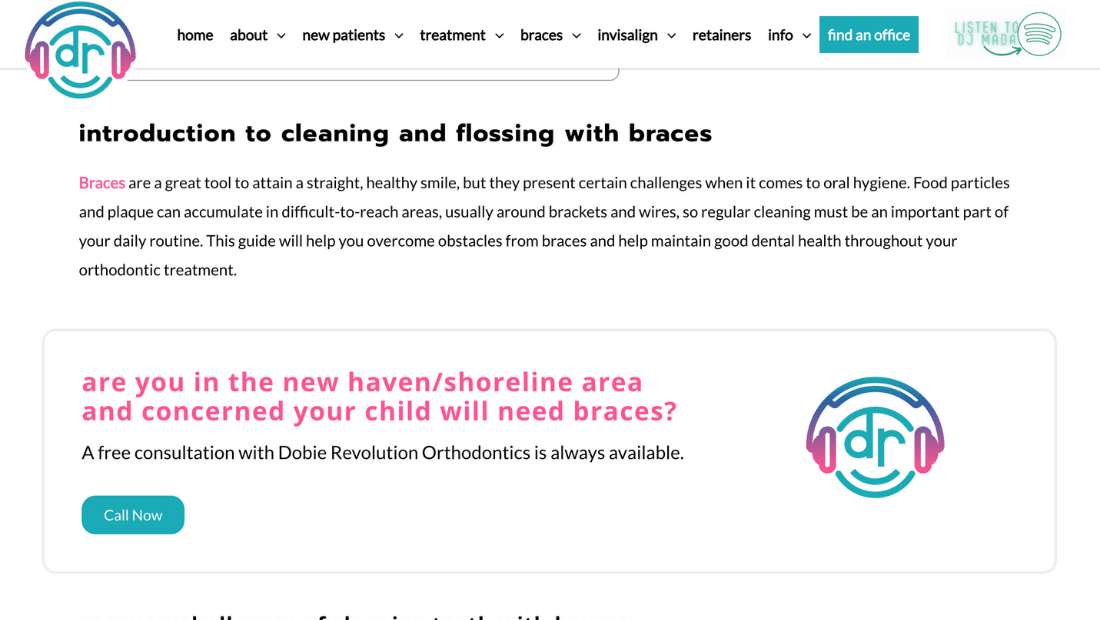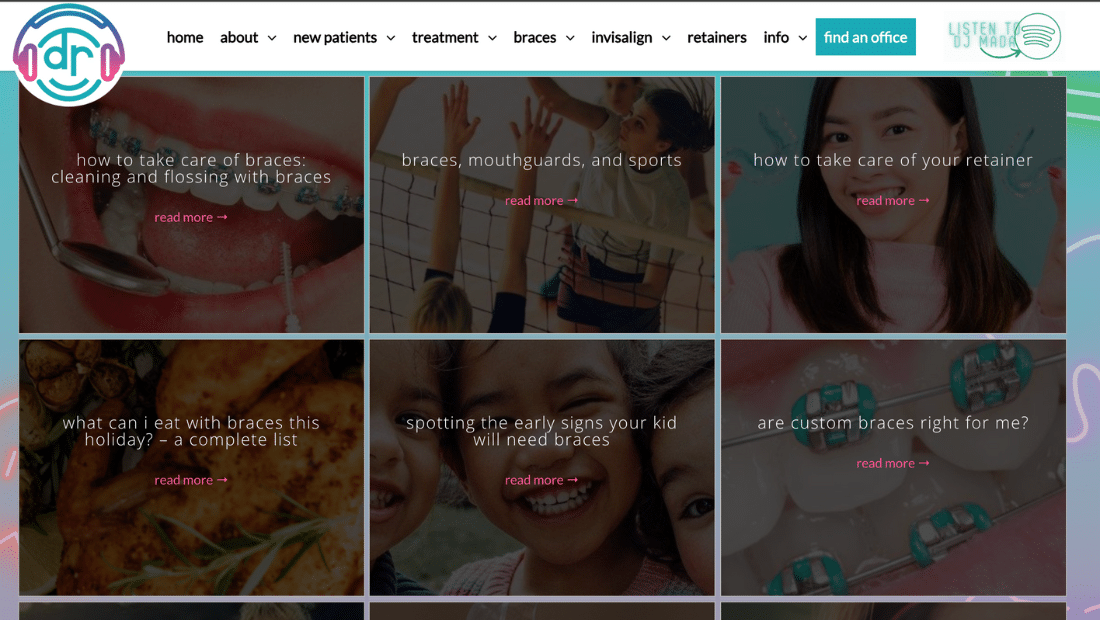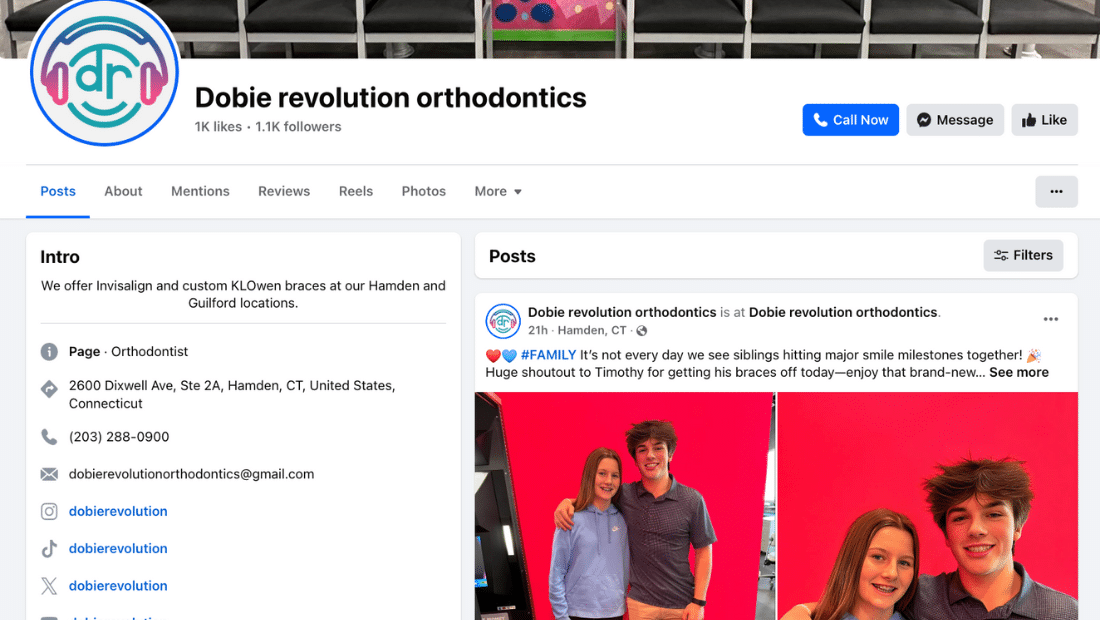How Do I Get My Orthodontic Blog to Rank
Understanding SEO for Orthodontic Blogs
Search engine optimization (SEO) is crucial for orthodontic practices looking to increase their online visibility. Ranking higher in search results means more potential patients finding your services. With over 77% of patients using online searches to find healthcare providers, having an optimized blog can directly impact your practice’s success.
What is SEO and Why Does It Matter for Orthodontic Practices?
SEO refers to the strategies used to improve a website's ranking on search engines like Google. For orthodontists, this means creating content that answers patient queries while incorporating keywords, backlinks, and technical optimizations. A well-optimized blog establishes your authority, drives traffic, and ultimately increases appointment bookings.
Ready to Boost Your Blog’s Rank? Get in Touch!
Blog Contact Form
"*" indicates required fields
Key Ranking Factors in the Dental and Orthodontic Industry
Google prioritizes expertise, authority, and trustworthiness (E-A-T) when ranking healthcare content. This means your blog should:
- Provide accurate, well-researched information.
- Include author bios with credentials.
- Earn backlinks from reputable dental and healthcare websites.
- Utilize structured data markup to improve search visibility.
Keyword Research for Orthodontist Blogs
Choosing the right keywords ensures your content reaches potential patients. With Google processing over 8.5 billion searches per day, selecting high-intent keywords can significantly improve rankings.
Finding High-Volume, Low-Competition Keywords for Orthodontics
High-volume keywords attract traffic, but competition can be fierce. Finding niche, lower-competition keywords like “best Orthodontist in [city]” can improve ranking potential. Tools like Ahrefs and SEMrush help identify keyword opportunities.
Long-Tail Keywords for Specific Orthodontic Treatments
Long-tail keywords—phrases with three or more words—help target specific patient concerns. Examples include “how long does braces treatment take” or “best orthodontist for overbite correction.” These keywords are easier to rank for and attract users with higher conversion intent.

Tools to Use for Effective Keyword Research
Utilizing keyword research tools enhances content strategy. Top tools include:
- Google Keyword Planner: provides search volume and competition levels.
- Ahrefs: Identifies ranking difficulty and backlink opportunities.
On-Page Optimization Techniques
Optimizing on-page elements ensures search engines understand your content while improving the user experience.
Optimizing Titles, Headings, and Meta Descriptions for Orthodontic Content
Titles and meta descriptions are the first elements users see on search engine results pages. Including primary keywords while maintaining a compelling, click-worthy headline improves both ranking and click-through rates. For instance, "Braces vs. Invisalign: Which Treatment Is Best for You?" is an engaging title incorporating SEO best practices.
Internal Linking for Establishing Topic Authority in Orthodontics
Internal linking helps distribute page authority across a website while improving the user experience. Linking from general blog posts (such as "What to Expect During Your First Orthodontist Visit") to treatment-specific pages (like "The Benefits of Lingual Braces") enhances navigation and topic authority, making it easier for search engines to crawl and index content.

Image SEO: ALT Text for Orthodontic Procedures and Before/After Photos
Since visual content plays a significant role in orthodontic marketing, properly optimizing images can improve search rankings. ALT text should describe images clearly, incorporating relevant keywords. For example, "Before and after photo of a patient who completed Invisalign treatment in 12 months."
Content Creation Tips for Higher Ranking
High-quality, engaging content is at the core of an effective SEO strategy. By addressing patient concerns, sharing real-life experiences, and utilizing multimedia, orthodontic blogs can attract and retain visitors.
Writing Engaging, Informative Content with Patient Case Studies
Real patient experiences provide credibility and relatability. A blog post titled "How Braces Transformed Sarah’s Smile in 18 Months" that details a patient’s journey through orthodontic treatment, including before-and-after images, enhances both engagement and trust.

Using Visual Content Like Before-and-After Transformations and Explainer Videos
Videos and infographics help simplify complex orthodontic procedures. Explainer videos on "How Invisalign Works" or "What Happens During an Orthodontic Consultation" increase user engagement while keeping visitors on the site longer—a key ranking factor for SEO.
Sharing Tips and Guides for Common Orthodontic Concerns
Informative blog posts answering frequently asked questions, such as "How to Relieve Braces Pain" or "Foods to Avoid with Braces," provide value to readers while naturally integrating keywords. Step-by-step guides and checklists also improve user engagement.
Off-Page SEO and Link Building Strategies
Building authority beyond on-site optimization is crucial for improving search rankings. Orthodontic blogs can benefit from strategic link-building efforts and community engagement.
Guest Blogging on Dental and Healthcare Websites
Writing guest posts on reputable dental blogs or healthcare sites generates valuable backlinks, signaling to Google that your content is credible. A guest post titled "The Advancements in Clear Aligners" on a high-traffic dental website can drive targeted traffic to your blog.
Partnering with Dental Associations and Local Practices for Backlinks
Collaborating with local dental offices, universities, and orthodontic associations for content sharing and backlinks strengthens domain authority. Many associations welcome expertly written articles that align with their audience’s interests.
Engaging with Local Communities and Schools for Outreach
Sponsoring community events, offering educational seminars, or providing school presentations about dental health can generate local citations and backlinks. Writing a blog post about "Why Orthodontic Health Matters for Teens" and linking to it from school websites can enhance local SEO efforts.
Leveraging Social Media to Educate and Attract New Patients
Sharing blog content on social media platforms like Facebook, Instagram, and LinkedIn drives engagement and encourages shares. Creating Instagram reels demonstrating "The Invisalign Fitting Process" or sharing testimonials on Facebook builds credibility and broadens reach.

Wrapping It Up: Key Takeaways for Boosting Your Orthodontist Blog’s Ranking
If you follow the guidelines outlined in this blog, you'll be equipped to significantly enhance the SEO of your orthodontist blog. By focusing on proven SEO tactics—like keyword optimization, on-page technical adjustments, and quality content creation—you'll improve your site's visibility in search engine results. This means more potential patients will find your practice online, which could lead to increased appointments and growth for your business. Implementing these strategies is an effective way to ensure your orthodontic practice stands out in a crowded digital landscape. For further guidance and expert SEO tips, consider contacting the Help A Blog team for personalized support and advanced strategies tailored to your needs.
